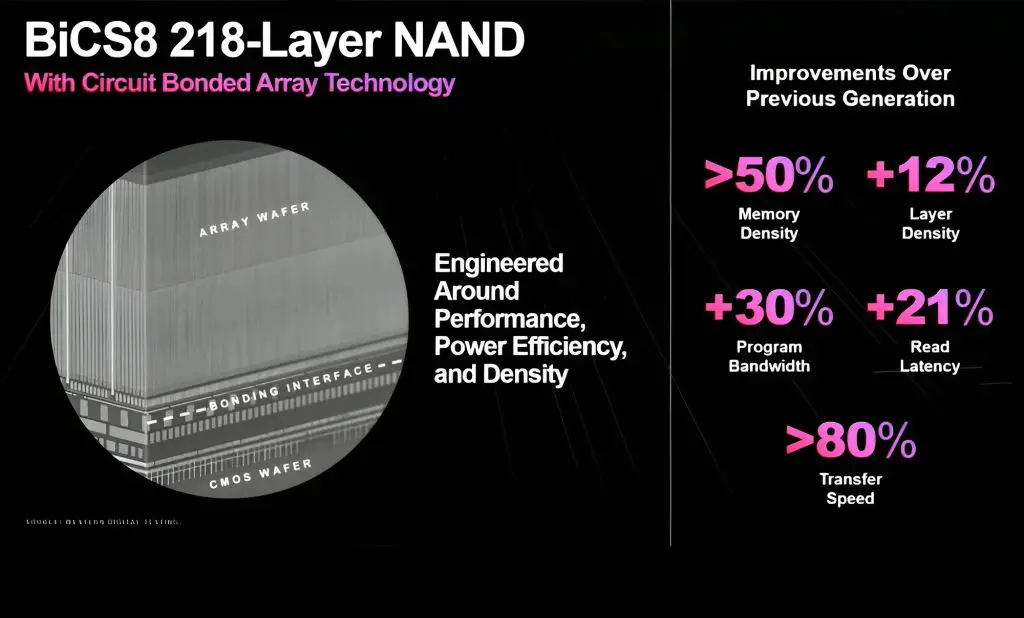Look, some folks love the Western Digital brand because it is the first brand that got in contact when portable HDDs were all the craze back then while some others had a bit of a bad taste because they suffered device failure not long after they got it. Anyway, the brand has weathered through recent times and managed to stay alive but its recent announcement could push them back into the spotlight very soon.
With the demand for high-speed SSDs thanks to AI (of course) and more games supporting DirectStorage, WD has shown off the industry’s 1st 2Tb 3D QLC NAND device (2Tb, not 2TB okay,) and they intend to push the high capacity SSD market to a new high by creating end-user storage products that are faster, larger, and more power-saving – pretty much all the terms that describe “generational leap”.
The improvements are shown publicly as well and while the majority of numbers feels okay, the 80%+ increase in transfer speed is currently too vague for us to know since there are no actual benchmarks and synthetic data that we can refer to.
Manufactured by a reliable and stable 218-layer BiCS8 production node, just look at that – it can be and feel like a ripped part from a bandage as I know. The brand also shared some comparative performance data revolving around the usual metrics of power efficiency, density, and I/O performance.
By showing off this “tiny little thing”, Robert Soderbery, Executive Vice President and General Manager of Western Digital’s Flash Business, did mention that showing off a big wafer is what they usually do but since it doesn’t really convey the immense shrinkage in die sizes, so they decided to take this route this time around.
Following Tom’s Hardware report, WD’s 1TB 3D TLC device was the last base product created from said 218-layer BiCS8 production node thus aside from focusing on the results that got, it is also quite the magnificent achievement of upgrading and tinkering with said production node to produce flash chips of such density.
Returning to the capacity topic, one 2Tb 3D QLC NAND device practically means 256GB, and following industry standards, one can create a 1TB drive with 4x memory ICs and 2TB with just 8. Thinking back to the time when I got my 256GB unit, it was from COLORFUL and it is a SATA-based SSD. From that size to this size. Damn.
Despite all the good news, some details are not as clear as we thought because WD didn’t touch on things like the yield rates and all so it all comes down to them and its partner Kioxia to produce them consistently while overdriving its cost and if they can, we should see TB-class SSDs turning into the mainstream and possibly become the next “minimum storage option” for laptops that won’t cost you an arm and a leg in the coming years.











